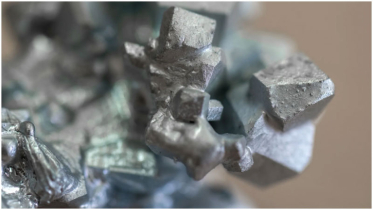Gas price surge expected to propel Pak inflation to 25%

The latest hike in gas and petroleum oil prices for Pakistani households and industrial consumers in February is estimated to increase the inflation rate by almost half a percentage point to around 25% in the current fiscal year 2023-24, reducing the likelihood of a token cut in the benchmark interest rate in mid-March 2024.
The projection for the inflation rate does not account for the potential impact of political upheaval following the election upset. Prolonged political crisis over the establishment of a new government at the centre, and its ripple effects, particularly any delays in securing a new International Monetary Fund loan programme post-April, could further raise inflation.
The surge in gas prices is expected to curb the smuggling of fertiliser to neighbouring countries at the expense of farmers and consumers, increasing the supply of urea and DAP in the country and reducing the need for their import.
In a commentary on the impact of the gas price hike on inflation and commodity prices, Arif Habib Limited (AHL) stated that the increase in gas prices could lead to a 43 basis point rise in the inflation rate. “With the current inflation rate standing at 28.3% as of January 2024, we anticipate that, taking this effect into account, the CPI (consumer price index) for FY24 will likely reach 24.91% year-on-year.”
While speaking to The Express Tribune, AHL’s Head of Research, Tahir Abbas, said that the inflation rate estimate for FY24 before the recent gas price hike was around 24.50%.
The latest inflation rate projection of 24.91% does not include the likely impact of the upward revision in petroleum oil product prices for the second half of February 2024, he added.
Optimus Capital Management (OCM) foresees the impact of the new gas pricing on inflation to be relatively low at 35 basis points, increasing the full-year inflation rate for FY24 to 24%.
To recall, the federal cabinet approved the weighted average gas price increase by 12.3% to Rs1,533/mmbtu (million British thermal units) from the last price of Rs1,365/mmbtu in November 2023.
Among notable increases, the gas tariff for fertiliser manufacturers witnessed a significant jump of almost 700%, an increase of 67% for residential consumers, and a surge of 25% for captive power plants operating mostly in export industries.
“We estimate a minimal 10% increase in gas prices across all income quintiles (other than the protected class),” AHL said.
This is the second gas price hike in three months made to fulfil IMF conditions ahead of the second and last review of the domestic economy by the global lender under its current programme of $3 billion, ending in April 2024.
The government also revised up diesel prices by Rs8.27/litre, increasing to Rs287.33/litre for the period from February 16 to 29. It raised petrol prices by Rs2.73/litre to Rs275.62/litre.
Days before the latest hikes in oil and gas prices, OMC, Research Analyst, Maaz Azam, had projected February’s inflation rate to sharply reduce to 24-24.5% compared to 28.3% in January. Further declines to 20-21% are expected for March 2024.
In its late January 2024 monetary policy statement, the State Bank of Pakistan (SBP) revised up its projection for the FY24 average inflation rate to 23-25% compared to July 2023’s estimate at 20-22%.
SBP Governor, Jameel Ahmad, linked the upward revision in the inflation rate to the hike in November 2023’s gas prices by the government, stating that the impact of the price hike was significantly higher than the bank’s projections.
Sectoral Impact:
AHL stated that the urea price is estimated to climb up by Rs1,120/50kg bag after the feedstock gas prices are massively hiked up to Rs1,597/mmbtu from Rs580/mmbtu in November 2023 (up by 2.8 times). Whereas, the fuel stock price for fertiliser manufacturers has increased to Rs1,597/mmbtu (previously: Rs1,580), up by 1.1%.
To recall, the fertiliser manufacturers were provided subsidised gas to make urea available at Rs2,500/bag to farmers. However, the low pricing encouraged smuggling of the fertiliser to comparatively expensive markets, resulting in the price of the chemical to around Rs5,000/bag in local markets.
The research house further said that keeping in view the partial gas dependency of Engro Fertiliser on the Petroleum Policy 2012 policy, the impact on it will be lower compared to other urea manufacturers; albeit the company would need to augment prices by Rs846/bag to completely pass on the impact.
Meanwhile, Fauji Fertiliser Bin Qasim Limited (FFBL) will have to revise urea and DAP prices by Rs1,367/bag and Rs530/bag, respectively, to pass on the impact completely.
It is pertinent to note that OGRA has not yet notified a revision in feed and fuel prices of consumers under the MARI network. However, once notified (assuming the same as SNGP and SSGC) for MARI network plants, the Fauji Fertiliser Company (FFC) will have to raise urea prices by Rs1,120/bag to pass on the impact fully.
AHL also estimated, assuming an average Rs1,000/bag increase in urea prices by the industry (including FFC) and for every one-month lag in MARI gas notification, FFC would have a monthly positive after-tax earnings impact of Rs1.88/share.
Gas tariff for cement players using captive power plants has increased to 2,750/mmbtu, up 10%. “Our workings suggest that Lucky Cement will have to raise prices by nearly Rs10/bag to completely pass on the impact of higher gas prices.”
Usage of gas by long steel players (manufacturers of rebars: ASTL and MUGHAL) during the reheating process is very low. The steel manufacturers are mostly relying on furnace oil for power generation, therefore, the impact would be muted.
EPCL has to raise PVC prices by $15/tonne to fully offset the impact. Lotte Chemical will need to raise PTA prices by $13/tonne to fully pass on the impact.
Besides, the gas price hike would make available the required financing to oil and gas exploration and oil marketing companies and help control circular debt. The beneficiaries may include OGDC, PPL, PSO, SNGPL, and SSGC.
.png)




